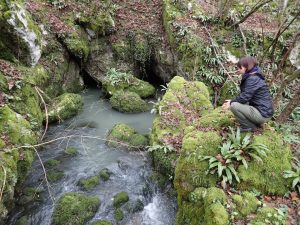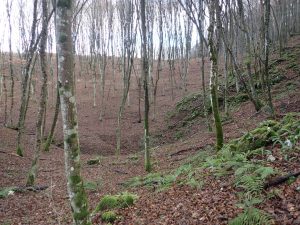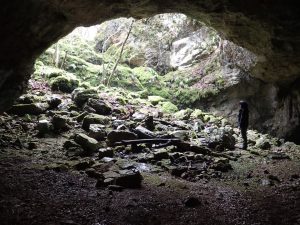Geodiversity
The wider area of the Protectedt Landscape of Barać Caves is part of the mega-geomorphological region of the Dinara Mountain Range. The direction of stretching (NW-SE) typical of the Dinarides predominates, with parallel, linearly elongated or arched mountains and hills and basins and valleys between them. It belongs to the macro- geomorphological region of Alpine Croatia, the meso-geomorphological region of the Una-Korana Plateau and the geomorphological region of Slunj Plateau with the Rakovica Foothills.


The geomorphological characteristics of an area directly reflect the petrological composition of the rocks, tectonic structures and geomorphological processes. On the territory of the Protected Landscape of Barać Caves, the following areal morphogenetic types of relief have been recorded: karst, fluviokarst, fluvial denudation and fluvial accumulation relief. In addition to the stated morphogenetic types, there are also sloping, suffosion and anthropogenic relief types. Karst relief is the most prevalent morphogenetic type in protected area, and it is developed in areas built from limestone. Sinkholes are the most dominant form of relief in the wider area. In the protected area, plate-shaped and bowl-shaped sinkholes predominate. In the southwestern part, the density of sinkholes exceeds 100 sinkholes/km2, which places it into the category of very high density of sinkholes. One specificity of this area is that it is largely located on a karst plateau – the wide Una-Korana Plateau which is, with an area of over 2000 km, the largest plateau of its kind in the Dinara karst. The protected area is located in the northwestern part of the structural unit of Lipovača – Cazin which is, at its southwest, divided from the structural unit of Mala Kapela with the reverse fault of Grabovac – Drežnik Grad. Due to such a tectonic structure, this area is characterised by complex hydrogeological relations that have influenced karstification processes and led to the formation and development of caves. Owing to the geological composition, primarily carbonate rocks and their tectonic disconformities, karstification was rampant throughout geological history and developed all surface and subterranean karst forms. Croatia’s karst areas belong to the type of temperate karst. Hydrological conditions represent an important factor that has, in the past and present, influenced and continues to influence the formation of cave structures.

On the territory of the Protected Landscape of Barać Caves, 9 cave structures have been discovered so far: New Barać Cave, Baraćevac Spring Cave, Upper Barać Cave, Lower Barać Cave, Cave with Pretty Entrance, Dry Valley Cave, Suvaja and the cave system of Jovo’s Cave and Ponorac. These structures are all considered caves. They are of varying dimensions, and their length ranges from 23 m, which is the length of Dry Valley Cave, all the way to 519 m, which is the length of Lower Barać Cave. The longest cave in this area is the cave system of Ponorac – Jovo’s Cave, with a length of 2834 m. The caves in this area are very diverse when it comes to hydrological function. One of the caves functions as a ponor (intermittently), two are springs (permanent), five used to be springs but are dry today, and only one of them has no paleohydrological function, past or present.

